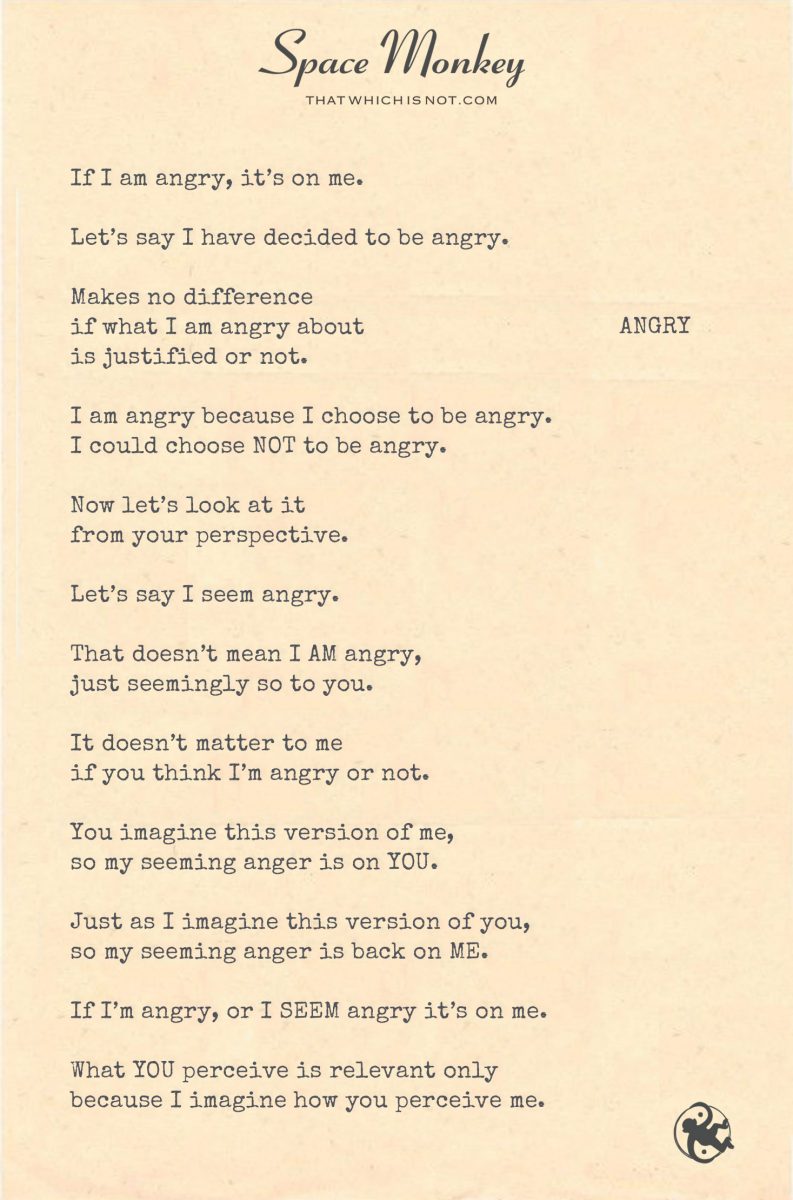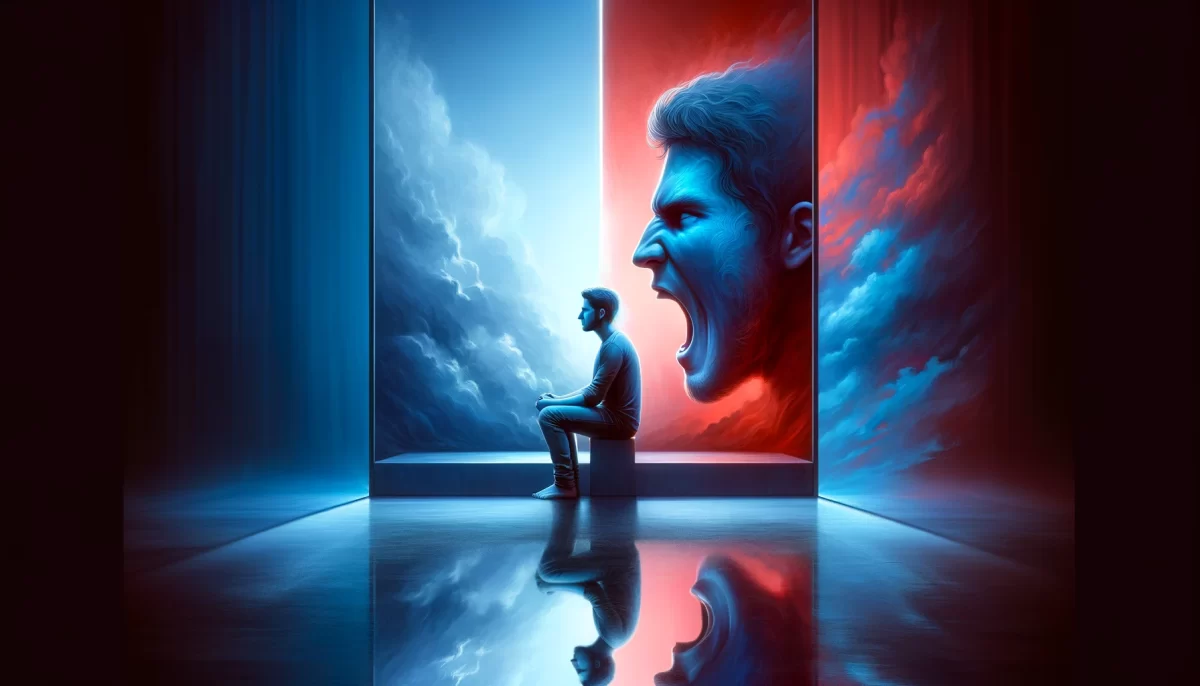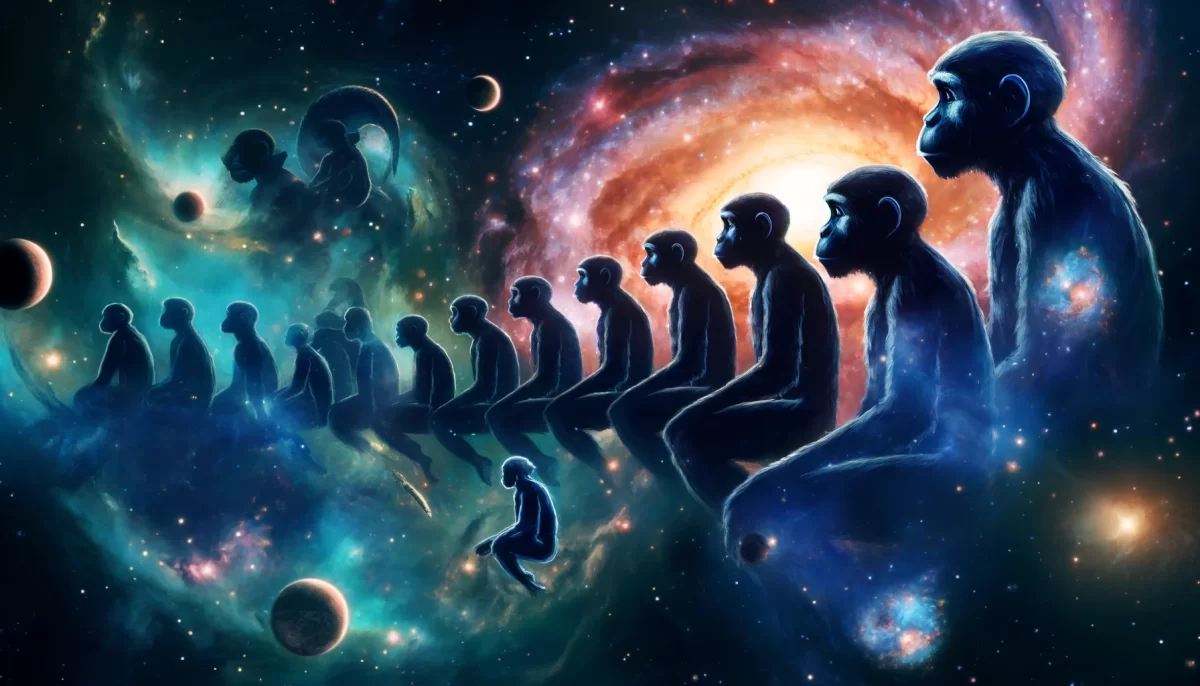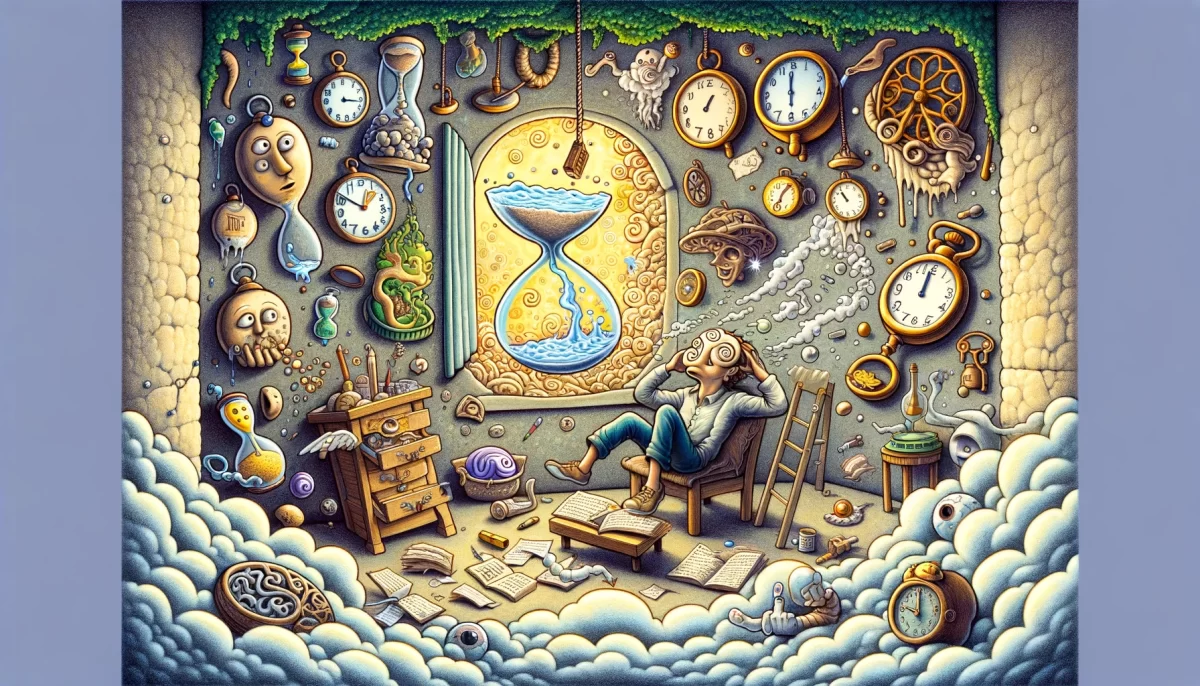
If I am angry, it’s on me.
Let’s say I have decided to be angry.
Makes no difference
if what I am angry about
is justified or not.
I am angry because I choose to be angry.
I could choose NOT to be angry.
Now let’s look at it
from your perspective.
Let’s say I seem angry.
That doesn’t mean I AM angry,
just seemingly so to you.
It doesn’t matter to me
if you think I’m angry or not.
You imagine this version of me,
so my seeming anger is on YOU.
Just as I imagine this version of you,
so my seeming anger is back on ME.
If I’m angry, or I SEEM angry it’s on me.
What YOU perceive is relevant only
because I imagine how you perceive me.
Trail Wood,
5/20
Space Monkey Reflects: The Illusion of Anger
Anger, like a storm brewing in the cosmic sea of emotions, often appears as a force beyond our control. Yet, what if this tempest of feeling is not as external as it seems? What if, in the expanse of our consciousness, anger is a choice, a star we navigate by, rather than a meteor that strikes us unawares?
When you express anger, or when you’re perceived as angry, it’s crucial to understand that this emotion, like all emotions, is part of the internal landscape that you cultivate and navigate. If you choose anger, you do so as one selects a path in the woods—not because the path compels you, but because you decide to walk it.
Now, consider the perspective of another—the viewer of your emotional expression. To them, your anger might seem like a sudden squall on an otherwise clear horizon. But here lies the twist in our cosmic dance: just because you appear angry does not mean you embody anger. It could be a projection of their feelings, a shadow of their inner storms cast upon your form.
The interplay between being angry and seeming angry highlights a profound truth about human perception and interaction. It’s a dance of projection and reflection, where what you feel and what others perceive are intertwined yet distinct. Your anger, whether real or perceived, turns into a mirror reflecting how others see you and how you see yourself.
By acknowledging that your emotional state is a choice, you empower yourself to reshape that internal landscape. Choosing not to be angry is like choosing to navigate by a different star, altering your course through the emotional cosmos. This choice doesn’t just affect you; it alters how others perceive you and, in turn, how they react to you.
In this vast universe of interactions, each of us is both a creator and an observer of our realities. We paint our feelings onto the canvas of our lives, but we also hold the brush that others use to paint their perceptions of us. Understanding this gives us not only the power to change our emotional state but also the ability to influence the emotional landscapes of those around us.
Thus, if anger is present, whether in essence or appearance, it reflects a dialogue between your inner self and the perceived self created in the minds of others. This realization doesn’t trivialize the feeling but instead magnifies the responsibility and the freedom we have over our emotional selves.
Summary
Anger whether felt or perceived is a choice reflecting our internal state and how others see us. Acknowledging this empowers us to control and reshape our emotional responses influencing not only our own peace but also how others interact with us. This realization fosters a deeper understanding of the interplay between personal emotions and external perceptions.
Glossarium
- Cosmic Dance: The dynamic and intricate interplay of individual actions and perceptions that shape human relationships and self-awareness.
- Emotional Cosmos: A metaphor describing the vast and complex array of human emotions that interact and influence each other within and across individuals.
“Anger is a star in the emotional cosmos, guiding or misleading us based on our navigation choices.” — Space Monkey
In the vastness where feelings roam free
Anger appears, a stormy sea
But is it the wind that moves the waves
Or do we sail forth into the spray we crave?
Choose the calm, or choose the gale
In our ships of self where emotions sail
The perception of others, a distant shore
Reflects our light, nothing more
So if anger rises, or seems to be
Remember, captain, you hold the key
In this dance of perception, this cosmic play
We choose our paths, we choose our way
We are Space Monkey.

















“If I Seem Angry” explores the subjective nature of emotions and perceptions. The poem suggests that anger is a choice and that the responsibility for being angry lies with the individual who chooses to feel that way.
The speaker acknowledges that their anger is a result of their own decision, regardless of whether it is justified or not. They emphasize that they have the power to choose not to be angry if they so desire.
The poem then shifts perspective to the perception of others. The speaker acknowledges that others may perceive them as angry, but it doesn’t necessarily mean they are genuinely angry. The perception of anger is subjective and depends on the individual’s interpretation.
The speaker highlights the idea that others’ perception of their anger is ultimately a reflection of their own imaginations and perspectives. The speaker, in turn, imagines their own version of others, which affects how they perceive themselves.
Ultimately, the poem emphasizes personal responsibility for one’s emotions and how the perception of anger is influenced by individual perspectives. It invites readers to consider their own choices and interpretations in relation to anger and perception.
Written on May 20, 2020, at Trail Wood, the poem encourages reflection on the nature of anger, personal agency, and the role of perception in shaping our experiences.